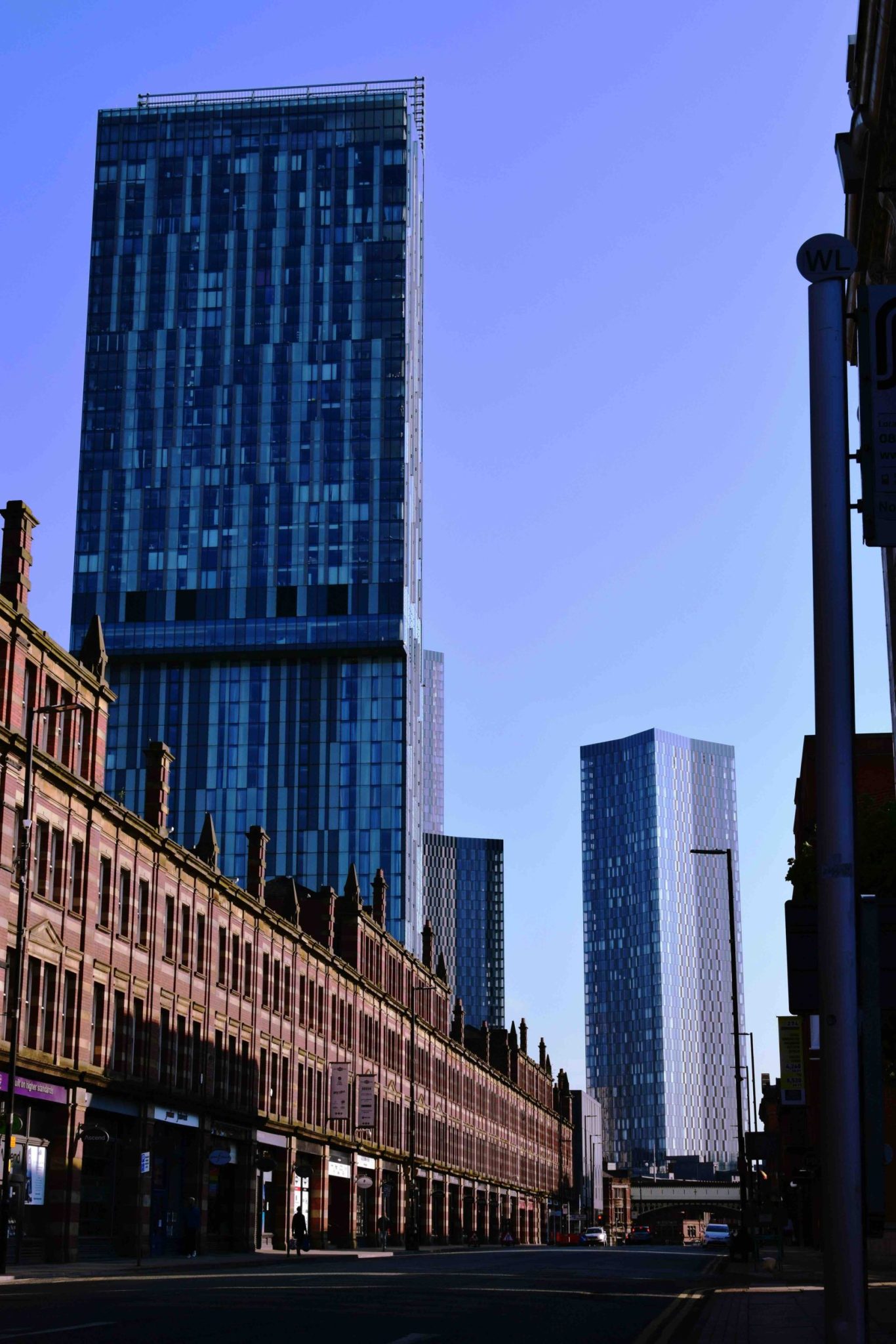
Photo by Matthew Waring
Manchester is undergoing a huge transformation.
New tall glass towers are being constructed at an incredible pace and most of them are designed for living rather than for work.
The population of the central business district, which is the area hemmed in by Great Ancoats Street, Trinity Way, and Mancunian Way, is expected to balloon to over 100,000 by 2025.
This is all the more remarkable when you consider that just 500 people lived there in 1990 (over a half a million people live in Manchester as a whole, and some 2.8 million live in Greater Manchester).
There has not been anything quite like it since the height of the Industrial Revolution, when the population doubled every decade, before it sharply declined in the aftermath of the two world wars and following the slum clearances of the 1960s.
Back then, as Deyan Sudjic, former director of the Design Museum wrote recently in the FT: “The wealthy lived in Cheshire. The ambitious left for London.
“Real change began while the idea of high-rise living was still regarded as a spirit-crushing failure,” Sudjic adds.
“When the IRA detonated a truck bomb outside the Arndale shopping centre in 1996, Manchester had only just finished demolishing 3,280 flats in Hulme, 20 years after they were completed. The city’s politicians, who had already been thinking about the future (bidding unsuccessfully to stage the Olympics), commissioned the planning consultancy EDAW and architect Ian Simpson to draw up a vision for what central Manchester could become. Their main priority was bringing people into the city.”
In the last five years 27 towers have been constructed to house over 60,000 residents, with 20 more currently being constructed and another 50 working their way through the planning system.
This includes a 71 floor giant on Great Jackson Street that will be one of the tallest residential towers in Europe at 250 metres.
At the heart of this transformation has been the architect Ian Simpson, who designed one of the first of the new wave of high rises, Beetham Tower, which stands at 47 stories.
Simpson, who today lives in the two story penthouse, complete with an olive grove, is unapologetic about Manchester’s skyward growth.
“This is a unique opportunity to bring life into the city centre. We can’t afford to miss it. There can never be too many new towers.”









